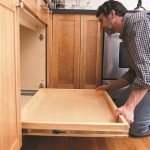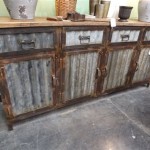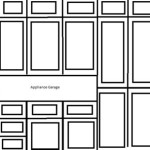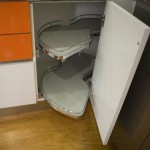Blue Paint Colors for Kitchen Cabinets: A Comprehensive Guide
Blue paint colors have gained significant popularity in kitchen design, offering a versatile and aesthetically pleasing option for cabinets. The color blue evokes feelings of tranquility, stability, and spaciousness, making it a desirable choice for creating a welcoming and functional kitchen environment. Selecting the right shade of blue for kitchen cabinets requires careful consideration of various factors, including the kitchen's lighting, size, existing color palette, and overall design style. This guide explores the nuances of choosing blue paint colors for kitchen cabinets, providing insights into different shades, complementary colors, and design considerations.
Understanding the Spectrum of Blue: From Light to Dark
The color blue exists on a vast spectrum, ranging from pale, airy shades to deep, saturated tones. Each shade possesses a unique character and impact on the overall feel of the kitchen.
Light Blues: Light blue shades, such as robin's egg blue, powder blue, and sky blue, are often associated with openness, freshness, and a sense of calm. These colors work particularly well in smaller kitchens, as they reflect light and create an illusion of spaciousness. Light blue cabinets pair beautifully with white or light-colored countertops and backsplashes, contributing to a bright and airy atmosphere. They also lend themselves well to coastal or cottage-style kitchen designs.
Medium Blues: Medium blue shades, including denim blue, cornflower blue, and slate blue, offer a balance between lightness and depth. These versatile colors can work in a variety of kitchen styles, from traditional to contemporary. They provide a more substantial presence than lighter blues, adding a touch of sophistication and depth. Medium blue cabinets can be complemented with natural wood tones, stainless steel appliances, and a range of countertop materials, including granite, quartz, and butcher block.
Dark Blues: Dark blue shades, such as navy blue, midnight blue, and indigo, exude a sense of drama, elegance, and sophistication. These colors are ideal for larger kitchens with ample natural light, as they can make smaller spaces feel cramped or overwhelming. Dark blue cabinets can be paired with lighter countertops and backsplashes to create a striking contrast and prevent the kitchen from feeling too dark. Gold or brass hardware complements dark blue cabinets beautifully, adding a touch of luxury and warmth. This color palette is often used in modern or transitional kitchen designs.
Considering Undertones: Warm vs. Cool Blues
Beyond the general shade of blue, it is crucial to consider the undertones that influence its overall appearance. Blue colors can have either warm or cool undertones, which can significantly impact how they interact with other colors and elements in the kitchen.
Warm Blues: Warm blues contain hints of red or yellow, giving them a slightly softer and more inviting feel. These blues tend to be more forgiving and can be easier to pair with a wider range of colors. Examples of warm blues include teal, turquoise, and some shades of periwinkle. In kitchen design, warm blues can create a cozy and welcoming atmosphere, especially when paired with warm wood tones and natural materials.
Cool Blues: Cool blues have undertones of green or gray, lending them a crisp, refreshing, and sometimes even austere quality. Examples of cool blues include ice blue, slate blue, and cobalt blue. These blues are often associated with modern and minimalist designs. They pair well with stainless steel appliances, white or gray countertops, and sleek hardware. Cool blues can create a clean and sophisticated look but may require careful balancing with warmer elements to prevent the kitchen from feeling too cold or sterile.
Determining the undertone of a blue paint color can be achieved by comparing it to a pure blue sample or by observing how it interacts with other colors in different lighting conditions. Natural light tends to accentuate cool undertones, while artificial light can bring out warm undertones.
Complementary Colors and Design Strategies
Selecting the right complementary colors is essential for creating a cohesive and visually appealing kitchen design with blue cabinets. The following are some effective color pairings and design strategies:
White and Blue: The combination of white and blue is a classic and timeless choice for kitchen cabinets. White provides a clean and neutral backdrop that allows the blue cabinets to stand out. This pairing can be adapted to various kitchen styles, from traditional to contemporary. A white backsplash, countertops, or walls can complement blue cabinets, creating a bright and airy feel. The specific shade of white should be chosen to complement the undertone of the blue – a cool white for cool blues and a warm white for warm blues.
Gray and Blue: Gray and blue create a sophisticated and calming palette. This combination works well in modern and contemporary kitchens. A light gray backsplash or countertop can provide a subtle contrast to blue cabinets, creating a sense of depth and visual interest. The undertones of the gray should be carefully considered to ensure they harmonize with the blue, avoiding clashes or a dull appearance.
Wood Tones and Blue: Natural wood tones add warmth and texture to a kitchen with blue cabinets. Light wood tones, such as maple or birch, complement light blue cabinets, creating a Scandinavian-inspired aesthetic. Dark wood tones, such as walnut or cherry, provide a striking contrast to darker blue cabinets, adding richness and depth. Butcher block countertops, wooden shelves, or exposed wooden beams can all contribute to this design strategy.
Metallic Accents: Metallic accents, such as gold, brass, or stainless steel, can enhance the visual appeal of blue cabinets. Gold or brass hardware adds a touch of luxury and warmth, particularly when paired with dark blue cabinets. Stainless steel appliances and fixtures complement cool blue cabinets, creating a sleek and modern look. The choice of metal finish should be consistent throughout the kitchen to maintain a cohesive design.
Backsplash Considerations: The backsplash plays a crucial role in complementing blue kitchen cabinets. White subway tile is a classic choice that works well with any shade of blue. Glass tile in a complementary color, such as gray or light blue, can add a touch of elegance and sophistication. A patterned backsplash can add visual interest and personality to the kitchen, but it is important to choose a pattern that does not clash with the blue cabinets. The grout color should also be considered, as it can affect the overall look of the backsplash. Opting for a grout color that matches the tile creates a seamless appearance, while a contrasting grout color highlights the tile pattern.
Countertop Compatibility: Selecting the appropriate countertop material and color is essential for creating a harmonious kitchen design with blue cabinets. White quartz countertops are a popular choice, as they are durable, easy to maintain, and provide a clean and bright contrast to blue cabinets. Granite countertops in a variety of colors and patterns can also complement blue cabinets, adding richness and texture. Butcher block countertops offer a warm and natural contrast to blue cabinets, creating a cozy and inviting atmosphere. The specific countertop material and color should be chosen to complement the overall design style of the kitchen and the shade of blue used on the cabinets.
Lighting Impact: The lighting in the kitchen can significantly affect the appearance of blue cabinets. Natural light tends to enhance the cool undertones of blue, while artificial light can bring out the warm undertones. It is important to consider the amount of natural light in the kitchen when selecting a blue paint color. If the kitchen receives limited natural light, a lighter shade of blue may be preferable to prevent the space from feeling too dark. Under-cabinet lighting can also be used to highlight the blue cabinets and create a more inviting atmosphere. Warm-toned lighting can soften the appearance of cool blue cabinets, while cool-toned lighting can enhance the crispness of cool blue cabinets.
Paint Finishes and Durability
Beyond color selection, choosing the right paint finish is crucial for ensuring the longevity and durability of kitchen cabinets. Different paint finishes offer varying levels of sheen, durability, and ease of cleaning.
Matte Finish: Matte finishes have a low sheen and a velvety appearance. They are good at concealing imperfections but are less durable and more difficult to clean than other finishes. Matte finishes are generally not recommended for kitchen cabinets, as they are prone to staining and damage from moisture and grease.
Eggshell Finish: Eggshell finishes have a slightly higher sheen than matte finishes and offer better durability and cleanability. They are a good option for kitchen cabinets in low-traffic areas or in kitchens where a softer, more muted look is desired.
Satin Finish: Satin finishes have a moderate sheen and are more durable and easier to clean than eggshell finishes. They are a popular choice for kitchen cabinets, as they provide a good balance of aesthetics and functionality. Satin finishes are resistant to staining and moisture damage, making them suitable for high-traffic areas.
Semi-Gloss Finish: Semi-gloss finishes have a high sheen and are very durable and easy to clean. They are an excellent option for kitchen cabinets in kitchens that are heavily used or where frequent cleaning is required. Semi-gloss finishes are resistant to staining, moisture damage, and grease buildup. However, they can also highlight imperfections, so it is important to ensure that the cabinets are properly prepared before painting.
High-Gloss Finish: High-gloss finishes have the highest sheen and are extremely durable and easy to clean. They are often used in modern and contemporary kitchens to create a sleek and sophisticated look. High-gloss finishes are very resistant to staining, moisture damage, and grease buildup but can also highlight imperfections even more than semi-gloss finishes. They require meticulous surface preparation for optimal results.
In addition to the finish, the quality of the paint is also important. High-quality paints offer better coverage, durability, and resistance to fading. It is important to choose a paint specifically designed for use on cabinets, as these paints are formulated to withstand the wear and tear of daily use.
Preparation and Application Techniques
Proper preparation and application techniques are essential for achieving a professional-looking finish on kitchen cabinets. The following steps outline the process:
Cleaning and Degreasing: Thoroughly clean and degrease the cabinets to remove any dirt, grease, or grime. Use a mild detergent and warm water to wash the cabinets, and then rinse them thoroughly and allow them to dry completely.
Sanding: Sand the cabinets to create a smooth surface and to help the paint adhere properly. Use a fine-grit sandpaper to lightly sand the cabinets, paying particular attention to any rough spots or imperfections. Remove any sanding dust with a tack cloth.
Priming: Apply a primer to the cabinets to create a uniform surface and to improve the adhesion of the paint. Choose a primer that is specifically designed for use on cabinets and that is compatible with the paint you will be using. Allow the primer to dry completely before proceeding to the next step.
Painting: Apply the paint to the cabinets using a brush, roller, or sprayer. Apply thin, even coats of paint, allowing each coat to dry completely before applying the next. Follow the manufacturer's instructions for drying times and application techniques.
Topcoat (Optional): Consider applying a clear topcoat to the cabinets to add additional protection and durability. A topcoat can help to resist scratches, stains, and moisture damage.
By carefully considering the various factors outlined in this guide, homeowners can confidently select the perfect shade of blue for their kitchen cabinets, creating a stylish, functional, and inviting space.

Our Favorite Blue Kitchen Cabinet Paint Colors Christopher Scott Cabinetry

20 Blue Kitchen Cabinet Ideas Light And Dark Paint Colors

Our Favorite Blue Kitchen Cabinet Paint Colors Christopher Scott Cabinetry

The Best Blue Gray Paint Colors For Kitchen Cabinets Wm Design House

Blue Kitchen Cabinets 15 Paint Colors Worth Trying

7 Sophisticated Blues For Your Kitchen Cabinets

7 Sophisticated Blues For Your Kitchen Cabinets

10 Beautiful Blue Kitchen Decorating Ideas Best Paints For Your

Best Paint Colors For Kitchen Cabinets And Bathroom Vanities

Grey Blue Paint Colors How To Create A Tranquil Slate Mood O Lovely Gray Kitchen Cabinets
Related Posts








